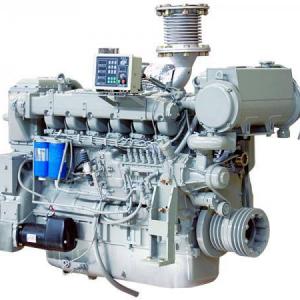Basic points and significance of routine maintenance of diesel engine
 1.
1.
1.Disassemble the plunger coupling and oil outlet valve coupling.
Remove the lead seal of the pressure cap of the oil outlet valve on the top of the fuel injection pump, screw out the pressure cap, take out the oil outlet valve coupling, place the oil outlet valve coupling separately, then screw out the positioning bolt of the plunger sleeve with a slotted screwdriver, remove the plunger spring and spring seat, pry up the lower flange of the plunger valve with a screwdriver with a little force, and then the plunger coupling comes out. The disassembled oil outlet valve coupling and plunger coupling must be separated separately and must not be misadjusted, otherwise they must be replaced.2. Check whether the plunger coupling can continue to be used.
Clean the plunger face with clean gasoline and observe. If there are scratches along the axis, the release surface is wide, the wear is milky white, and there is an obvious feeling by hand, it can no longer be used. If there is no obvious trace on the surface, the sliding inspection can be carried out, that is, the plunger couple tilts about 45 ° (the big end of the plunger sleeve is downward), extracts about one-third of the plunger mating cylindrical surface, and rotates the plunger. If the plunger can automatically slide downward without block after letting go, it is qualified. Then check the sealing condition of the plunger diameter: first align the use section of the plunger chute with the position of the oil return hole, then block the end face hole of the plunger sleeve and another oil inlet hole by hand, and then push the plunger slowly. When the end face of the plunger reaches the upper edge of the oil return hole (i.e. the cover has no hole), it is qualified to observe that there should be no oil foam and bubbles in the oil return hole.
3. Check the oil outlet valve coupling.
The worn parts of the oil outlet valve are mainly the pressure reducing ring belt and the sealing surface. After the pressure reducing ring belt is worn, its pressure reducing effect is weakened, which increases the residual pressure in the high-pressure oil pipe after injection, and the oil is not completely cut off, which will cause oil dripping in serious cases. The weakening of the pressure reducing effect will also increase the injection advance angle and the injection continuation angle. After the sealing cone is worn, the sealing performance will deteriorate and the leakage will increase. Poor sealing will cause oil dripping from the fuel injection nozzle, poor atomization, difficult starting of the diesel engine, cylinder knocking at high speed, unstable speed at low speed, black smoke from exhaust, increased fuel consumption and decreased power.
The way to check the oil outlet valve is to remove a high-pressure oil pipe, put the throttle at the stop oil supply position, pump oil with the hand pump for several times, and there is no diesel overflow at the oil pipe joint at the top of the fuel injection pump, indicating that the oil outlet valve has good sealing; Otherwise, it will wear. For a single cylinder engine, remove the oil outlet valve spring and tight seat, use your thumb to catch the oil outlet valve, open the pressure reducing valve, increase the accelerator, and then turn the flywheel. If you feel a big force to jack up your thumb during oil supply, and the jacking height is equal to the height of the pressure reducing ring of the oil outlet valve, it indicates that the oil outlet valve coupling is good; If the jacking force is small and the jacking height is small, it indicates that it has been worn and needs to be replaced





